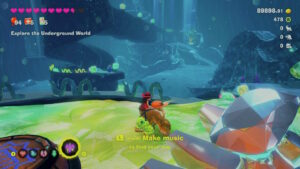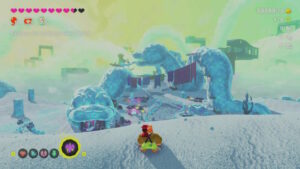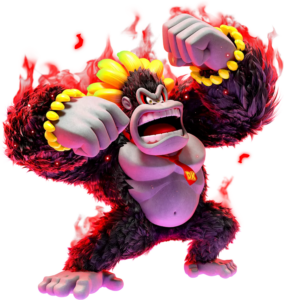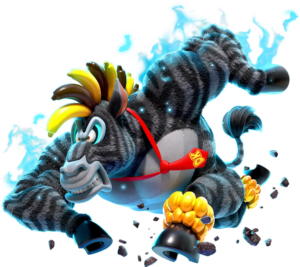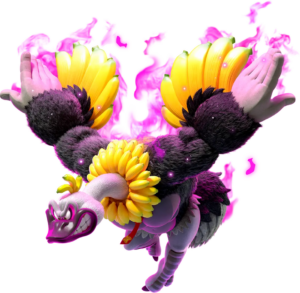When we saw Donkey Kong Bananza announced for the Switch 2, we were both surprised and uncertain about the game. After all, Donkey Kong has never usually been Nintendo’s series of choice to launch a new system, with standbys like Mario and The Legend of Zelda using taking the year 1 spot. Add this to the shock of it being a new 3D Donkey Kong game in over 20 years, and the somewhat mixed reception Donkey Kong 64 has received in the years since release, and well… we very unsure how well it’d even do.
Would Bananza be a big enough deal to entice people to buy the system? Could a new 3D Donkey Kong game actually work, and live up to the likes of Super Mario Odyssey and Astro Bot?
And how would a game with as much freedom as Bananza work overall? How could a game where you could go everywhere and destroy anything be remotely balanced overall, let alone for the long run?
Well, we’re happy to point out that somehow, Nintendo has answered all those questions with a resounding yes. That Donkey Kong Bananza isn’t only a great game in of itself, but potentially one of the best games the company has ever made.
And the reasons for that start with the aesthetics. Put simply, Donkey Kong Bananza looks and sounds incredible. Indeed, with huge sprawling levels filled with details and colour, the game is simply stunning to experience, with every new layer just adding more and more to the overall experience.
It’s a true dream to behold, and one of Nintendo’s most visually impressive titles in decades.
Additionally, it’s also a rather charming one too. Yes, the characters can sometimes look a bit weird. And yes, Donkey Kong’s new design is certainly a departure from the Rareware one…
But dear god, does it all come together here. Donkey Kong is more expressive than ever in Bananza, with both him and Pauline having some incredible reactions to the events around them. Meanwhile, their supporting cast is on point too, with every new character and species you encounter having a charming design filled with personality in every corner. It’s most notable with the villains (Void Company and [name redacted]), but damn there’s a lot to love here.
As for the music? Yeah, it’s top notch.
With the standouts basically being the Bananzas and vocal songs throughout the game. Dear lord, these things are catchy. In just 5 minutes of getting the Zebra Bananza, we were shouting “ZEBRA!” at damn near every opportunity, and the same goes for the others too.
Indeed, they’re so good, that you’ll probably want to activate the Bananzas just to hear the music that goes with them:

Then there’s the ending music. We’re not gonna spoil it here, but yeah, it gives Jump Up Superstar and Break Out, Lead the Way competition in the catchiness department at least.
Add this to the insane boss music in the endgame, and well… this title should be a sure inclusion in the best soundtrack department at this year’s Video Game Awards.
Yet as nice as the game looks and sounds, that’s not really what matters here. No, the gameplay is the most important aspect of any title, regardless of its budget or polish.
Fortunately, Donkey Kong Bananza just nails it in that regard. With the main reason being that it’s basically Super Mario Odyssey but dialled up to a hundred.
Indeed, with Banandium Gems replacing Power Moons, layers replacing kingdoms and a quest to stop the VoidCo villains reaching the planet core replacing Bowser’s marriage with Peach, the game feels fairly similar on a conceptual level. You’ve got big open sandbox areas to explore filled with collectibles and NPCs, and it all works well here.
Where it differs more than that however is the sheer level of freedom you have. You see, in Odyssey, it’s still just basic Mario at its core. You jump around and platform, and the capture mechanic is used like a powerup substitute. You could easily implement this into the Super Mario 64 engine, and not much would change.
Bananza on the other hand is very different. Moveset wise, it feels like a cross between Mario, Donkey Kong Country, Breath of the Wild, Minecraft and Wario World, with all the craziness and freedom that implies.
Since not only can you climb anything and go anywhere at almost any time, you can also smash the entire level to pieces too. Walls and platforms can be torn to shreds, bits of the ground can be pulled up and used as weapons or shield surfing items, and you can even level the entire layer if you so desire, leaving nothing but flat metal and concrete walls in your wake.
It’s a level of freedom almost unparalleled in a Nintendo game, and means that every obstacle and puzzle can be tackled in any number of potential ways. Don’t feel like following a tricky path to an obstacle? Climb right up, or smash a tunnel straight through. Think the original setup for getting rid of those puzzle blocks is annoying? Use your Bananza abilities (more on those later) to suck up all the dirt in seconds, or explosively blast it to bits. Feel like you can’t be bothered with a sublayer or mini game?
Well, just skip it if you can figure out how! With the exception of the bosses found in certain layers, there’s no mandatory task that forces you to handle anything in a particular way, or engage with any particular obstacle or challenge at all.
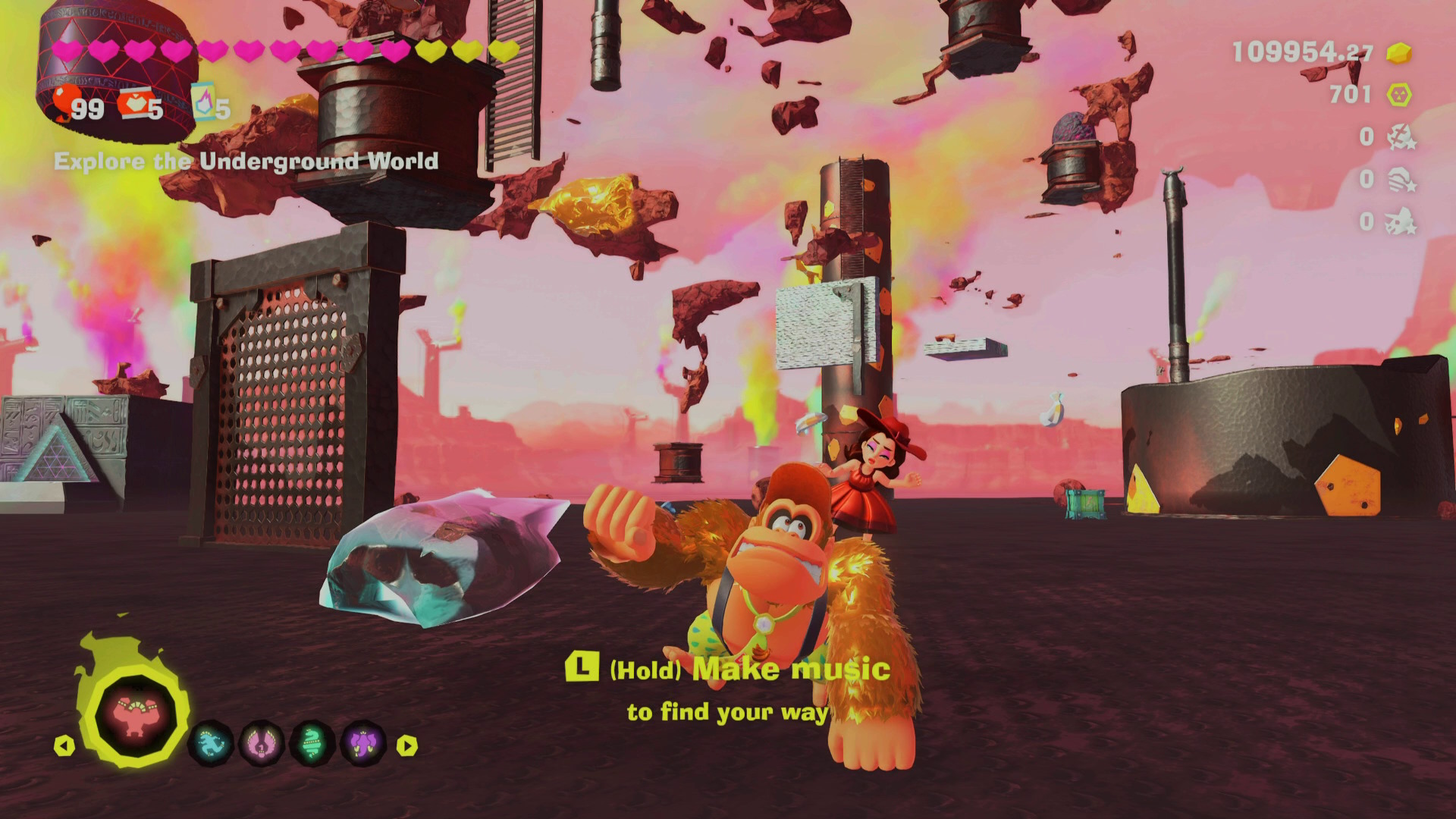
A mostly destroyed level in Donkey Kong Bananza
In theory, this sounds like the formula for a boring game. In practice? It’s a game so well-designed that you’re having fun no matter what path you take or how you take it. One where a player has almost infinite freedom, yet doesn’t feel bored due to a lack of challenge or variety.
Part of that is due to just how fun the challenging and demolition actually is here. It feels viscerally satisfying to annihilate the terrain around you, and the constant drop of gold, treasure maps and other rewards keeps it feeling engaging throughout. In a game where gold is king, and spending money is commonplace in every aspect, a fun way to get said gold en masse is deeply rewarding.
There’s also the creativity and scope of the levels too. Indeed, while the Odyssey team showed they could do crazy things before, Bananza just takes it to another level.
For example, there’s a whole world based on artistic snakes creating art from crystals and using them to power an artificial sun to light up their underworld desert landscape. A stormy mountaintop filled with meteorologist elephants studying a weather controlling legendary bird. A full-on amusement park made of food with a burger the size of a building.
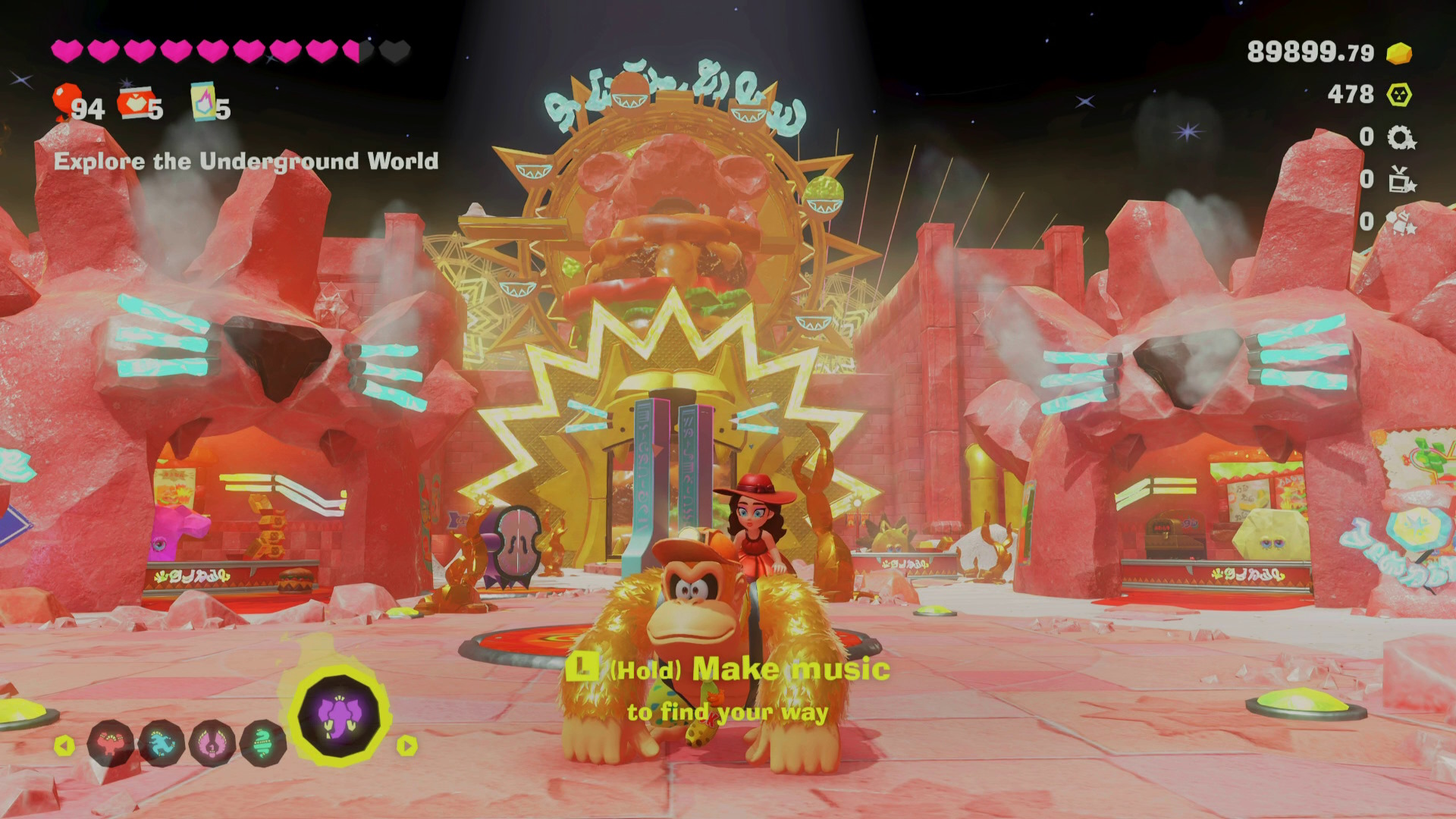
This is one of the craziest areas in the game
The list just goes on and on. Even when the levels are basic in theming (like the obligatory beach area or the forest area), it’s crazy and interesting enough it doesn’t feel that way, with rainbow paths creating by flung enemies or an ostrich hotel shaped like a giant egg.
It’s a game that’s just dripping with originality and personality the whole way through.
It’s also one which scales up the typical 3D collectathon level, and doesn’t fall apart in the process. Indeed, Bananzas levels are so enormously detailed and filled with content that it often feels more like 4 levels in one in about half the layers in the game.
Take that snake filled cavern for example. The first area is a challenge room sized linear path, and that’s pretty normal.
Yet after dropping down, the level just opens up over and over again. There’s the main hub with the Elder where you learn the Snake Bananza, which is on par with the Cascade Kingdom or Seaside Kingdom in terms of size. There’s another layer under that with more content, plus a tower at least as big as the Cap Tower from Odyssey, with a mini boss…
And then you drop down into a giant Sand Kingdom sized desert beneath it all, and go through two or three more areas to reach the main boss. It’s insane really, and makes the game’s 17 levels feel more like 25 or 30 levels instead.
Of course, navigating those levels is as fun as it ever was. Indeed, not only can you smash them to hell, surf around on chunks of rock or take all kinds of wacky paths throughout these enormous stages…
But you can also take advantage of the new Bananza abilities too. These transform DK into a cross between an ape and another animal, and provide some of the most fun gameplay changes in the entire game.
Since well, every Bananza is its own beast entirely. The Kong Bananza is basically super strength, letting DK blast through sturdy walls and enemies without a care in the world. The Zebra Bananza is super speed, letting him run over crumbling terrain and blast up walls at high speed, the Ostrich one lets him glide, and the elephant and snake ones let him suck up objects and bounce high into the air respectively.
They’re amazing abilities through and through, and with an epic backing song to go with each one, turn the game into a real power rush whenever they’re in play.
What’s more, they’re also just useful in every context too. Yes, there are a few puzzles that involve them, and a few of the challenge rooms require you using them to enter…
But their abilities aren’t so much keys as they are navigation tools. They’re key parts of DK’s moveset that you can swap between at any time, and they provide new ways to traverse the levels because of that. Want to get past a ton set of enemies and obstacles? Use the elephant to destroy the walls, then the Kong to blast your foes to bits. Want great height and distance? Use the snake to bounce high into the air, then use the ostrich to glide to where you need to be.
Each and every one is just so seamlessly integrated into the game, and feels like a completely natural part of DK’s moveset.
Which brings us to the upgrades. Put simply, DK’s moveset at the start is fairly limited compared to what you’ll unlock later. You’ve got a short timer for the Bananzas, your punches do limited damage, many basic abilities aren’t present at all…
So, you’ll need to use skill points to unlock them. These are gained at a rate of 1 per 5 Banandium Gems, and can be reassigned by the elders if you regret your choices later on.
And they’re a nice way of letting you self-manage how difficult you want the game to be, or what you want to specialise in. Think you’re a pro at combat, and don’t need to worry about getting hit? Power up your offensive abilities to tear through enemies while leaving your health the same. Have a certain Bananza you use more than the rest? Power up that one in particular, then leave the rest till later.
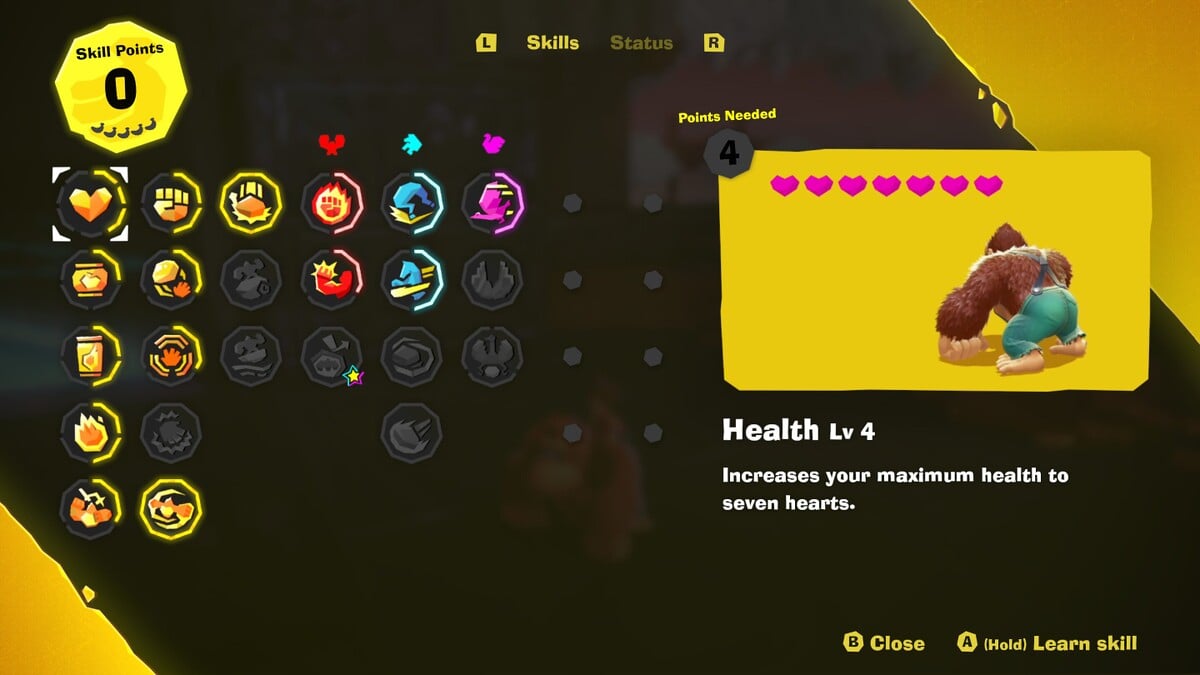
The Skill Tree lets you customise every aspect of DK’s moveset
It’s a good way of doing things, and lets you customise your playstyle in a very useful way.
Unfortunately, said difficulty is a bit on the inconsistent side. Since while there are tough levels in Bananza, the way they’re implemented is somewhat questionable to say the least.
Since well, the game doesn’t really have a difficulty curve as much as it does multiple difficulty plateaus, all at fairly discrete points in the game.
For example, the early game is incredibly easy. You’ve got way too much health to worry about enemies and obstacles, the bosses go down in seconds due to your powerful abilities, and the obstacles are simple enough to overcome that you don’t really have to think much to make progress.
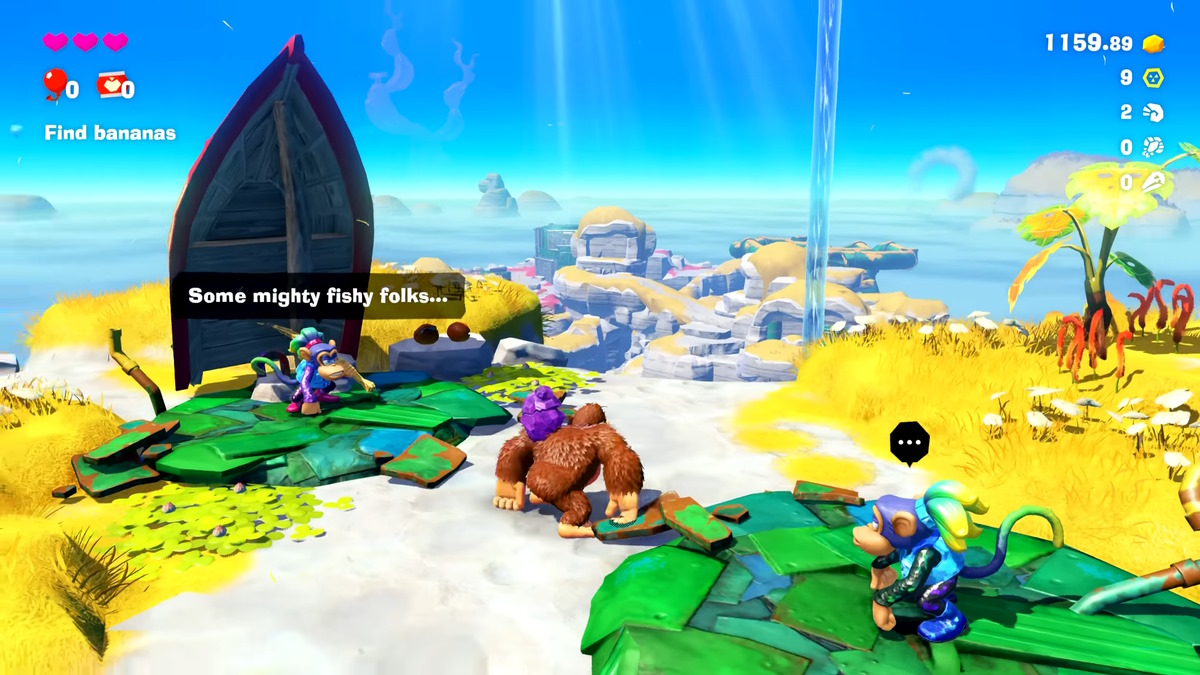
The Lagoon Layer is fun, but this part of the game is just far too easy overall
This is true of the game up to about the Divide, and for most everyday obstacles up to the Tempest Layer.
Then there’s a bit of moderate difficulty up to the last area, where obstacles are challenging enough you’ll need to be careful, but not so much you’ll really have to retry over and over again. You may actually die at this point, if you get too cocky or careless.
The endgame and start of the postgame is then another step up entirely. Now the platforming has teeth, the bosses have way more health than before, and there’s a decent chance you’ll screw up a few times because of it. The game is arguably at its peak here, with the final boss being one of the best experiences we’ve ever had in a Nintendo game.
Finally, there’s the true challenges from the postgame, where things get insane. You’ve got the rehearsal levels, that put your abilities to their true test. The battle and boss gauntlets, which ramp up the difficulty of otherwise easy foes to something a bit more brutal. And some other stuff, which may give things like Champion’s Road some needed competition.
And while we do get it to a degree (Nintendo games tend to be really simple early on since most players are likely still new to the genre at the point), it can definitely feel a little mindless at times because of it. It’s a bit too easy to just tank everything, or bypass every challenge by going slightly off the beaten path.
The bosses aren’t exactly the greatest either, save for a few exceptions.
Since well, the majority of them are random VoidCo creations that don’t really have much in the way of personalities, designs or attack patterns. For example, you’ve got a giant monster made of Octopi, which usually goes down in about 30 seconds, giant versions of the Crockoid and Stompoid enemies that are barely more advanced than their regular counterparts, and gimmick battles like the Mad Mixer and Abracajabya which don’t really provide much more than a spectacle.

They’re still fun to fight, and it’s kinda consistent with previous Donkey Kong games in terms of boss quality (most tend to have 1-2 great bosses, and 4-6 mediocre ones that fail to impress), but it’s a bit disappointing nonetheless, especially given Odyssey improved on past 3D Mario bosses to a greater degree.
Ah well, at least the main villains provide amazing boss battles, even if we’ll avoid spoiling them here for everyone else’s sake.
Regardless, Bananza is a great game with some of the best levels and mechanics we’ve seen so far. But how long will it keep you playing for?
Quite a while to say the least.
Because Donkey Kong Bananza is a huge game. Like, gives Super Mario Odyssey and The Legend of Zelda: Breath of the Wild competition level huge.
Seriously. Do you know how many missions this game how? How many Banandium Gems there are to find?
777.
Yeah, that’s technically less than the number of unique Power Moons in Super Mario Odyssey. But here’s the thing.
Bananza basically doesn’t have most of the filler content Odyssey had. It’s got some repeated gems sure, like talking to Cranky in each layer, reuniting pieces of an NPC, feeding a giant tree, etc…
But there aren’t 60 Banandium Gems locked behind random statistics and story events like the Toadette challenges, or 21 hidden behind Hint Art. There’s some thought involved here, with a surprising amount included in challenge rooms or other tricky side areas found way off the beaten path.
So, while the Banandium Gem count is a little less than the Power Moon one was, it’s still ridiculously high nonetheless, with the increased difficulty of the challenges required making it trickier to get the former than the latter.
Yet the level of content available doesn’t end with these missions.
No, there are other collectibles too. Like say, fossils and records.
The former are basically models of objects from across the Donkey Kong franchise that can be found throughout the levels, and which are used to buy clothing items in shops. In other words, they’re the regional coins of the game, albeit with far more interesting designs and descriptions.
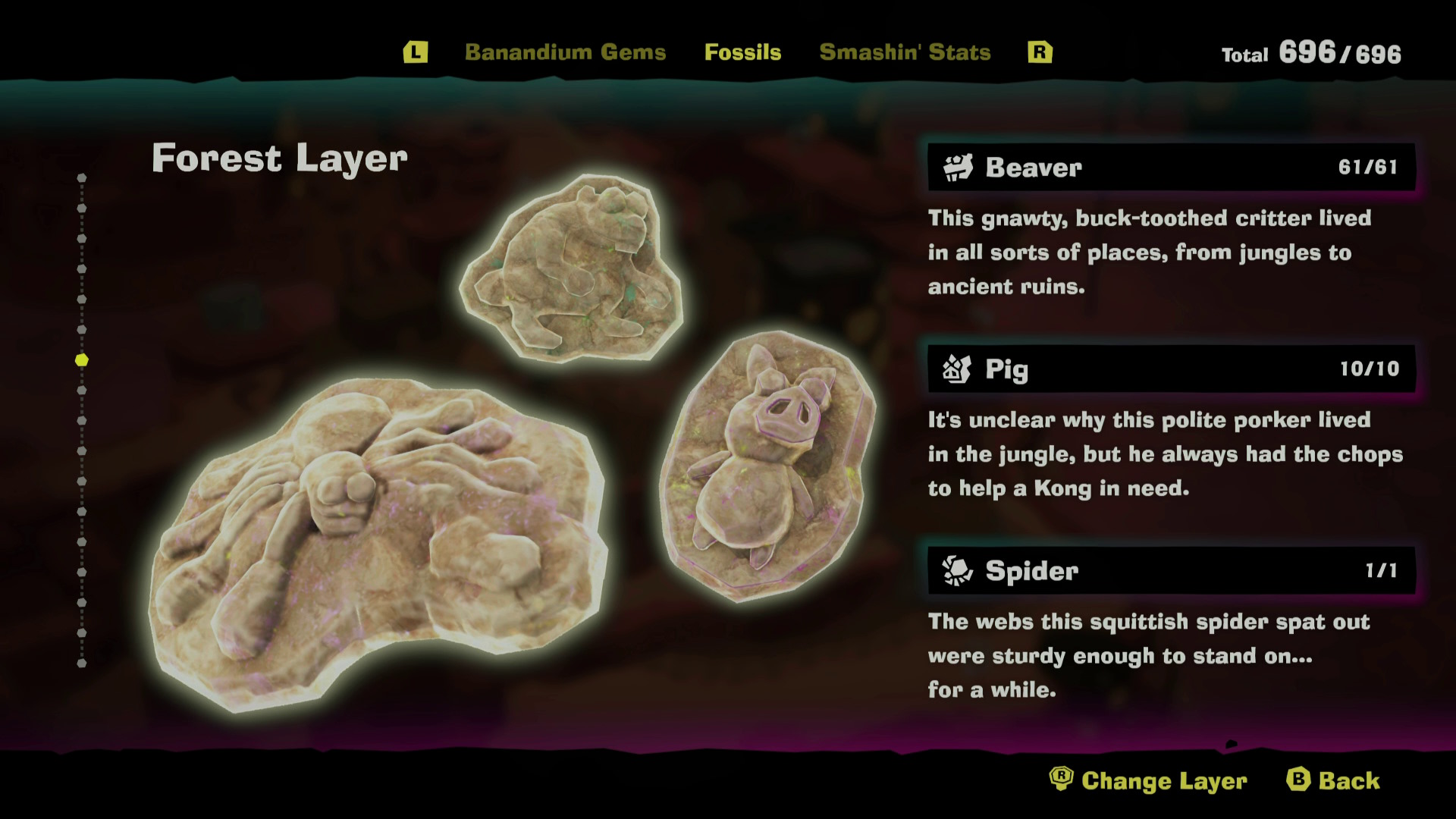
The fossils are full of references to past Donkey Kong games
Meanwhile the latter are music CDs, which drop from enemies and fill out the game’s sound test. They’re reminiscent of the music player unlocks in the Paper Mario games, and the CDs in Wario Land 4.

The music player lets you unlock songs in-game by collecting random records
And here’s the crutch:
Both are required for 100% completion in Donkey Kong Bananza.
In other words, imagine if the Korok Seeds were outright required to unlock the final shrine in Breath of the Wild or Tears of the Kingdom. Or if things like the recipes counted towards the completion percentage on your save file.
Yeah, there’s a lot here to say the least. Enough in fact that a quick 100% completion playthrough is probably around the 40-50-hour mark, and a slow one could end up in the hundreds of hours.
It’s definitely not a game you’ll be done with quickly, that’s for sure!
Still, that’s Donkey Kong Bananza for you. It’s an amazing game that mixes the very best of Super Mario Odyssey and the Donkey Kong Country series, and one of the most creative, well-designed titles Nintendo has ever made. It’s not perfect by any means, given the bosses are a bit lacking and the difficulty is rather low early on, but it’s damn near close, and probably the nearest thing the Switch 2 has to a killer app right now.
Definitely check it out if you’re a Donkey Kong fan, platformer fan or need another game for the Switch 2 after Mario Kart World!
97%
